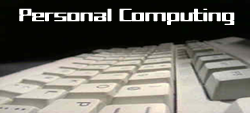 By Reid Goldsborough
By Reid Goldsborough
Despite flashiness of the Web, e-mail is and has always been the Internet’s killer app.
E-mail is the primary reason people go online, followed by research, according to a survey by Louis Harris & Associates. More than 1.6 billion noncommercial e-mail messages are sent each day in the U.S., which is nearly three times the number first-class postal mailings, according to an analysis by eMarketer, an Internet market research firm in New York City.
It’s easy to see why. E-mail is cheaper and faster than a letter, less intrusive than a phone call, and more flexible than a fax. You can e-mail at work, school, and home, 24 hours a day, exchanging not only text but also photos, voice messages, and even video.
The first e-mail message was sent less than 30 years ago. Today, for many, e-mail has become an indispensable business and personal communications medium.
Chances are, though, that you’re not using e-mail to its full potential.
These days you can go postal trying to keep up with all your incoming e-mail. Probably the most overlooked e-mail time-savers are filters and folders. With popular e-mail programs such as Microsoft Outlook Express and Netscape Messenger, you can, for instance, automatically filter messages from your boss or important clients into a folder called Urgent. Whenever you fire up your e-mail program, go there first.
America Online lacks robust filtering, which is just one reason it can make sense to graduate to a full-fledged Internet service provider. There are also times when it makes sense to graduate from the free e-mail program that comes with your Web browser to a commercial, stand-alone e-mail client such as Eudora Pro (http://www.eudora.com).
Among Eudora Pro’s useful features are its sophisticated filtering, its adeptness in managing multiple e-mail accounts, and its ability to quickly resend bounced messages.
Whatever e-mail program you prefer, you can use a free Web-based e-mail service such as Hotmail (http://www.hotmail.com) in conjunction with it when you travel or when in work situations you need to keep your personal e-mail separate from your business correspondence.
Services such as JFax (http://www.jfax.com) let you send and receive faxes and receive voicemail through your regular e-mail program. JFax also lets you listen to your incoming e-mail over the phone, which can be useful when you’re away from a computer, though it’s unwieldy in managing lots of messages. Receiving faxes and voice messages via e-mail is free; other services are charged.
If you regularly send one e-mail message to lots of people, say a newsletter to prospects or clients, check into a commercial bulk e-mail program such as MailKing (http://www.mailking.com). It works with your existing database and can be used to personalize the messages you send. But don’t send unsolicited, untargeted bulk e-mail, called spam, or you’ll just antagonize many of those you’re trying to reach.
For sending and receiving e-mail among the same group of people, consider a Web-based mailing list service such as ONElist (http://www.onelist.com). It’s free, and it’s easier to use in creating and managing e-mail-based discussions than older services such as Listserv.
E-mail may be fast, but it’s not always reliable. Web-based services such as CertifiedMail.com (http://certifiedmail.com) guarantee delivery of e-mail, which is useful when sending important business documents. Pricing starts at $10 per month for business use; personal use, with limited features, is free.
CertifiedMail.com also lets you encrypt your e-mail, to prevent others from reading it, and digitally sign it, to assure your recipient that it’s from you and not forged. Optionally, you can do the same with your existing e-mail client using a program such as PGP Personal Privacy (http://www.mcafee.com).
Though you can attach photos, music, and other files to your e-mail messages, many Internet service providers limit the size of these attachments to three megabytes or less. WhaleMail (http://www.whalemail.com) is a new, free service that lets you use your Web browser to send attachments as large as 50 megabytes.
If you haven’t caught the Internet greeting card bug yet, you’re missing out on a money-saver. Web-based services such as Egreetings (http://www.egreetings.com) let you send wired associates, friends, and relatives personalized cards for birthdays, anniversaries, and other occasions, for free.
Finally, here are five quick tips for e-mailing in general: Use descriptive subject lines. Keep messages, including quoted material, short. Send messages as unformatted text without attachments whenever possible. Copy only necessary people when responding to a group message. Double-check who will receive your message before sending it.
Want to learn more about e-mail? Check out Everything E-Mail (http://www.everythingemail.net).
♦

